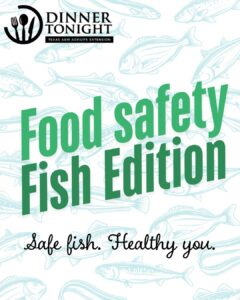How to Sanitize your Kitchen after a Flood
 Sanitizing your Kitchen & Utensils:
Sanitizing your Kitchen & Utensils:
- Thoroughly wash metal pans, ceramic dishes, utensils
(including can openers) with soap and water (hot water if
available). Rinse and then sanitize them by boiling in clean
water or immersing them for 15 minutes in a solution of
1 tablespoon of unscented, liquid chlorine bleach per
gallon of drinking water. - Thoroughly wash counter tops with soap and water (hot
water if available). Rinse and then sanitize them by applying
a solution of 1 tablespoon of unscented, liquid chlorine
bleach per gallon of drinking water. Allow to air-dry. - Discard wooden cutting boards, plastic utensils, baby
bottle nipples, and pacifiers that may have come in contact
with flood waters. There is no way to safely clean them.
Salvaging All-Metal Cans & Retort Pouches
Undamaged, commercially prepared food in all-metal cans
and retort pouches (for example, flexible, shelf-stable juice or
seafood pouches) can be saved if you do the following:
- Remove the labels if possible. They can harbor dirt and
bacteria. - Thoroughly wash the cans or retort pouches with soap and
water (use hot water if available). - Brush or wipe away any dirt or silt.
- Rinse the cans or retort pouches with water that is safe for
drinking (if available). Dirt or residual soap will reduce the
effectiveness of chlorine sanitation. - Then sanitize them by immersion in one of the following
ways:- Place in water. Allow the water to come to a boil for
2 minutes.
or - Place in a freshly made solution consisting of 1 tablespoon
of unscented, liquid chlorine bleach per gallon of
drinking water (or the cleanest, clearest water available)
for 15 minutes.
- Place in water. Allow the water to come to a boil for
- Allow to air-dry for a minimum of 1 hour before opening
or storing. - Relabel the cans or retort pouches with a marker. Include
the expiration date if available. - Use the food in these reconditioned cans and retort pouches
as soon as possible. - Any concentrated baby formula in reconditioned, all-metal
containers must be diluted with clean, drinking water.
Information from USDA Food Safety and Inspection Service
Lunch Box Lessons
Seafood Food Safety Tips
Some people are hesitant of cooking seafood because of the food safety aspects. Let us help you so you can confidently cook seafood safely with these tips!
- Store
- Raw fish and shellfish can be stored in the refrigerator for 1-2 days before it needs to be cooked or frozen.
- Cooked seafood can be stored in the refrigerator for 3-4 days.
- Frozen fish can be stored for for up to 8 months for best quality.
- Don’t Cross Contaminate
- Handle raw and cooked seafood products separately.
- Thoroughly clean and rinse work spaces between preparation and cooking steps.
- Cook Fish and Seafood Properly
- Fish is cooked when it turns opaque and reaches an internal temperature of 145 Degrees F.
- Follow processors directions when preparing frozen, packaged seafood products.
For more tips on how to select your fresh fish in the grocery store or market for best quality and safety, visit this webpage.
The USDA Dietary Guidelines for Americans recommends incorporating fish and seafood into a healthy diet, find your next seafood dinner, here:
- Air Fried Red Snapper
- Apple Tuna Salad Sandwich
- Avocado Tuna Salad Sandwich
- Baked Parmesan Catfish
- Baked Risotto with Lemon Seared Scallops
- Baked Tilapia
- Bang Bang Salmon Bowls
- Beet, Tuna, and White Bean Salad
- Blackened Tilapia
- Cajun Grilled Fish Tacos
- Catfish Tacos with Pico de Gallo and Avocado Crema
- Crab Cakes with Sorghum
- Crispy Crab Taquitos
- Crunchy Lime Wasabi Salmon
- Dijon Salmon
- Herbed Citrus Grouper
- Hot Alaska Salmon Melts
- Italian Shrimp Fettucini
- Italian Style Cod
- Lemon Butter Fish
- Marinade – Basic
- Marinade Mexican Inspired
- Mustard Crusted Fish
- Orange and Ginger Salmon
- Parrilla Tilapia Hamburguesas
- Parsley Crusted Fish
- Roasted Tilapia with Orange Parsley Salsa
- Rub – Fancy
- Salmon Bowtie Pasta
- Salmon Patties
- Shrimp & Broccoli Alfredo
- Shrimp and Slaw Street Tacos
- Shrimp and Veggie Mac N’ Cheese
- Shrimp Tacos with Lime Crema Sauce
- Shrimp Tacos with Southwest Watermelon Salsa
- Spicy Garlic Shrimp Pasta
- Spicy Salmon Sushi Cups
- Spicy Shrimp Spinach Salad
- Tacos de Pescado a la Parilla Estilo Cajún
- Tips to Eating Seafood
- Tuna
- Tuna Cakes
- Tuna Ceviche Cucumber Bites
- Tuna Melt Sandwiches







